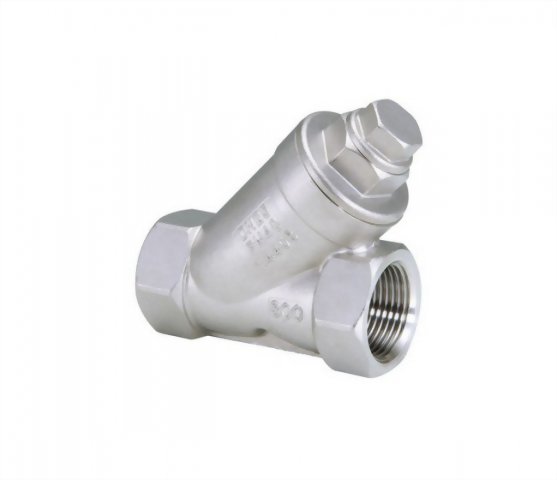Strainer check valves are widely used in industrial applications to ensure the smooth and efficient operation of various systems. They are designed to remove particles and debris from fluids to prevent damage to downstream equipment, while also maintaining a constant flow rate and pressure. In this blog post, we will discuss the importance of strainer check valves in industrial applications and their key features.

What are Strainer Check Valves?
A strainer check valve is a type of industrial valve that combines the functions of a strainer and a check valve. Strainers are used to remove particles and debris from fluids to prevent damage to downstream equipment, while check valves are used to prevent backflow in pipelines. Strainer check valves combine these two functions to provide enhanced protection against pipeline damage and improve the overall efficiency of industrial systems.
Why are Strainer Check Valves Important?
Strainer check valves are important for several reasons. Firstly, they help to protect downstream equipment from damage and maintain the efficiency of industrial processes. By removing particles and debris from fluids, they prevent clogging and blockages that could cause downtime and costly repairs.
Secondly, strainer check valves also help to reduce the frequency and cost of maintenance. By removing particles and debris from fluids, they prevent wear and tear on pumps, valves, and other equipment, which can reduce the frequency of repairs and replacements.
Finally, strainer check valves also help to improve the safety and reliability of industrial systems. By preventing backflow in pipelines, they ensure that fluids flow in the intended direction, reducing the risk of accidents or spills that could harm workers or the environment.
Key Features of Strainer Check Valves
Strainer check valves are available in a wide range of designs and configurations to fit different industrial applications. However, they all share several key features that make them effective at removing particles and debris from fluids while preventing backflow in pipelines.
One of the most important features of strainer check valves is their construction. They are typically made from durable materials such as stainless steel or brass to withstand the harsh conditions of industrial environments. The valves are also designed to be easily disassembled for cleaning or repairs, which reduces downtime and maintenance costs.
Another important feature of strainer check valves is their filtering capabilities. They are designed to remove particles and debris of different sizes, depending on the application. Some strainer check valves can filter particles as small as 50 microns, while others can filter particles up to 5mm in size.
Finally, strainer check valves also feature a check valve mechanism that prevents backflow in pipelines. The check valve is typically positioned upstream of the strainer to prevent fluids from flowing in the wrong direction. When pressure drops below a certain threshold, the check valve closes to prevent backflow and protect downstream equipment.
Conclusion
In conclusion, strainer check valves are an essential component of industrial systems that help to maintain the efficiency, reliability, and safety of processes. They are designed to remove particles and debris from fluids while preventing backflow in pipelines, which reduces the risk of damage to downstream equipment and helps to reduce maintenance costs. Whether you are working in the oil and gas, chemical, or water treatment industries, selecting the right strainer check valve for your application is critical to ensuring long-term success.